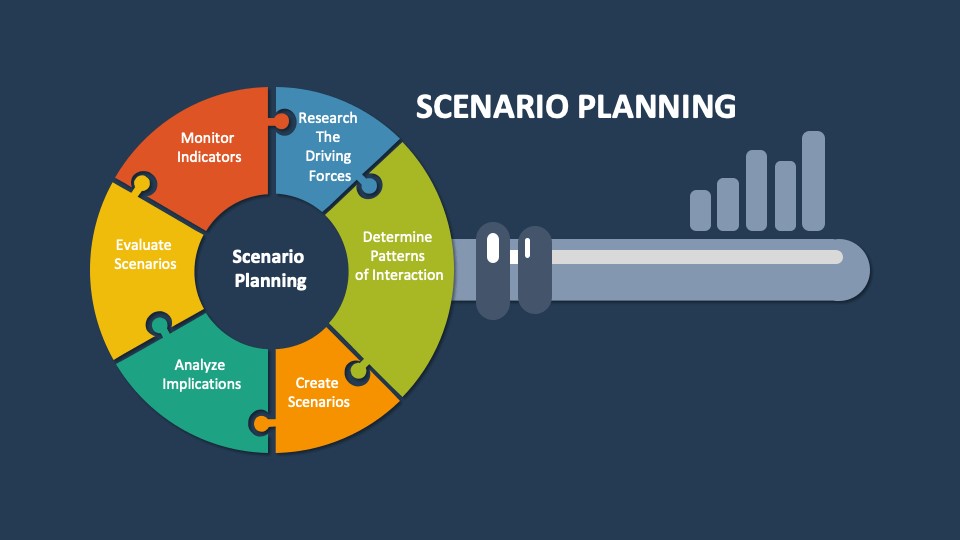
At its core, Scenario Planning encourages organizations to move beyond short-term thinking and consider long-term possibilities. Unlike traditional forecasting methods, which predict the most likely outcome, Scenario Planning involves imagining multiple alternative futures. These scenarios can include best-case, worst-case, or neutral outcomes, each analyzed to understand its potential impact. As businesses face complex challenges like technological disruption and global economic shifts, Scenario Planning equips them to adapt, survive, and thrive.
The Importance of Scenario Planning in Strategic Decision-Making
Scenario Planning plays a vital role in strategic decision-making by helping businesses identify risks and opportunities that may not be immediately apparent. By considering multiple possible futures, organizations can uncover blind spots and mitigate potential risks before they materialize. This proactive approach not only helps companies avoid costly mistakes but also positions them to seize new opportunities that emerge in different scenarios.
For example, a company operating in a rapidly evolving technology sector might use Scenario Planning to explore the implications of different levels of market disruption. By envisioning scenarios where disruptive technologies either take off quickly or fail to gain traction, the company can prepare strategies for both outcomes. This allows them to adapt more quickly when market conditions change, ensuring they remain competitive. It also helps businesses balance short-term goals with long-term resilience, providing a roadmap for navigating uncertainty.
Key Components of Scenario Planning
In order to implement Scenario Planning effectively, businesses must consider several key components. First, companies must identify the critical uncertainties that could significantly impact their future. These could include technological developments, regulatory changes, economic shifts, or competitive threats. Once the key uncertainties are identified, businesses can develop multiple scenarios that explore how these factors might play out under different conditions.
The next step is to assess the potential impact of each scenario on the organization. This involves analyzing how the company’s operations, strategy, and financial performance would be affected in each scenario. By doing so, businesses can prioritize the scenarios that are most likely to impact their industry and begin developing contingency plans. The goal is to create flexible strategies that allow the company to adapt regardless of which scenario unfolds.
Finally, successful Scenario Planning requires ongoing monitoring and adjustment. As new information becomes available or market conditions change, businesses must update their scenarios and strategies accordingly. This dynamic approach ensures that companies remain agile and responsive to new challenges.
Benefits of Scenario Planning for Businesses
The benefits of Scenario Planning are numerous, making it an essential tool for businesses operating in uncertain environments. One of the primary advantages is that it encourages creative thinking and innovation. By exploring multiple potential futures, companies can challenge their assumptions and think outside the box. This can lead to new ideas for products, services, or business models that may not have been considered in traditional planning processes.
Additionally, Scenario Planning enhances organizational agility. Companies that have already considered a wide range of possible outcomes are better prepared to act quickly when faced with unexpected changes. Whether it’s responding to a sudden economic downturn or capitalizing on a new market trend, businesses that engage in Scenario Planning are more likely to stay ahead of their competition.
Another benefit is improved decision-making. By considering various scenarios, businesses can make more informed choices that take into account a broader range of possibilities. This reduces the risk of making decisions based solely on short-term data or overly optimistic forecasts. Instead, companies are able to weigh the pros and cons of each scenario, leading to more balanced and strategic decision-making.
Examples
Many global organizations have successfully used Scenario Planning to navigate complex environments. Royal Dutch Shell, one of the world’s largest oil and gas companies, is often cited as a pioneer in Scenario Planning. Shell has used this approach since the 1970s to anticipate major shifts in the global energy market. By envisioning different scenarios related to energy demand, regulation, and geopolitical factors, Shell has been able to adjust its strategies to remain resilient in a highly volatile industry.
Similarly, the COVID-19 pandemic highlighted the importance of Scenario Planning for businesses in every sector. Companies that considered scenarios involving global disruptions, such as supply chain interruptions or economic recessions, equipped themselves better to handle pandemic challenges. This included adjusting to remote work environments, managing disrupted supply chains, and responding to changing consumer behavior. It allowed these businesses to act swiftly and effectively in the face of unprecedented uncertainty.
Challenges and Limitations
While Scenario Planning offers many benefits, it also presents certain challenges and limitations. One of the main difficulties is the complexity of developing accurate and meaningful scenarios. Businesses must carefully consider a wide range of factors, many of which are outside their control. This requires significant research, data analysis, and collaboration across different departments. If not done correctly, Scenario Planning can lead to overly speculative or irrelevant scenarios that fail to provide actionable insights.
Additionally, it can be time-consuming and resource-intensive. Organizations must invest in the process by dedicating time and personnel to developing and analyzing scenarios. For smaller companies with limited resources, this can be a significant barrier to implementation. However, businesses that engage in Scenario Planning gain long-term benefits that often outweigh the initial investment, equipping them to handle uncertainty more effectively.
Another limitation is that it’s not a predictive tool. It cannot accurately forecast the future but can only prepare companies for a range of possibilities. Therefore, businesses must be careful not to rely solely on Scenario Planning but should use it in conjunction with other strategic planning tools.
In conclusion, Scenario Planning is an invaluable tool for businesses looking to navigate uncertainty and future-proof their strategies. By considering multiple potential futures and developing flexible strategies, companies can anticipate risks, seize opportunities, and stay resilient. Though it requires time and resources, Scenario Planning’s benefits—including better decision-making, creativity, and agility—make it a valuable investment. As global markets evolve, businesses that implement Scenario Planning will position themselves better to thrive amidst uncertainty.

